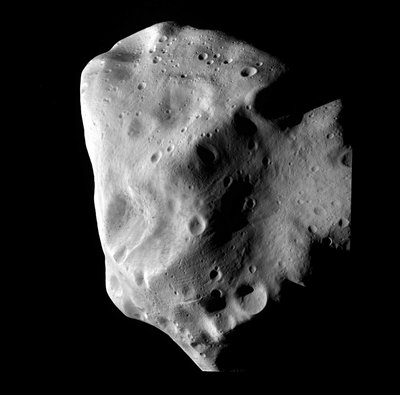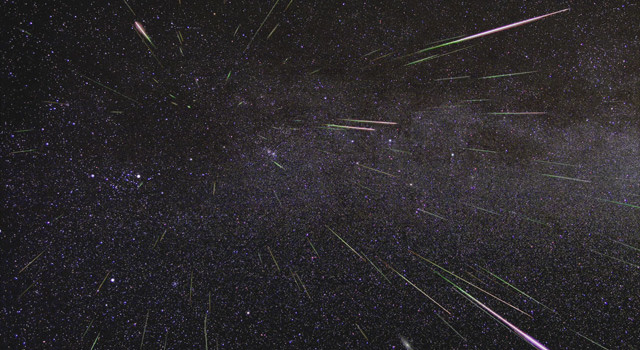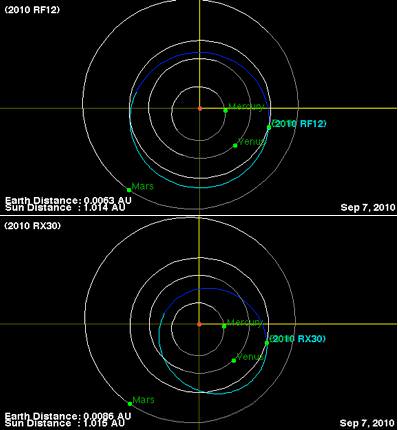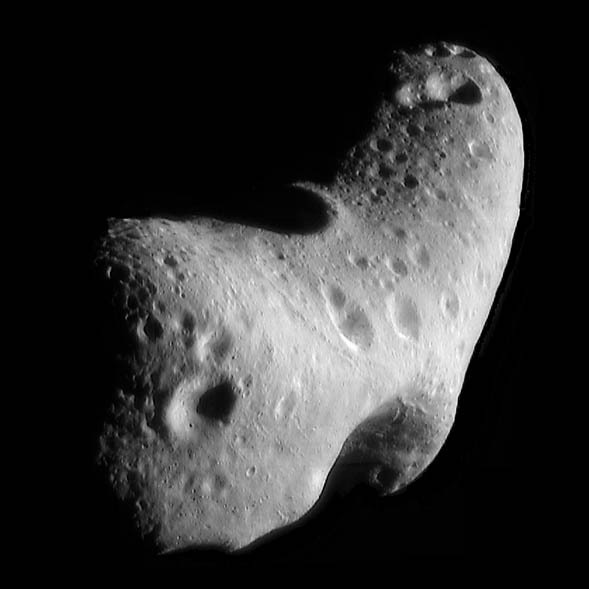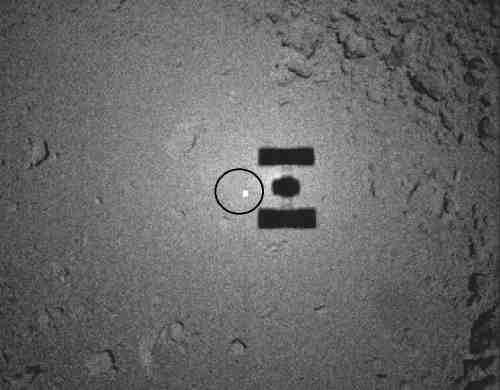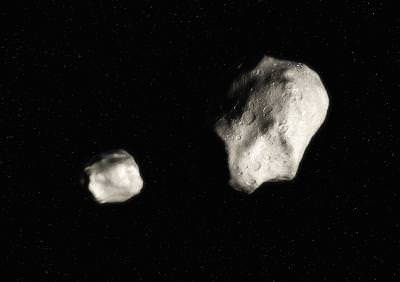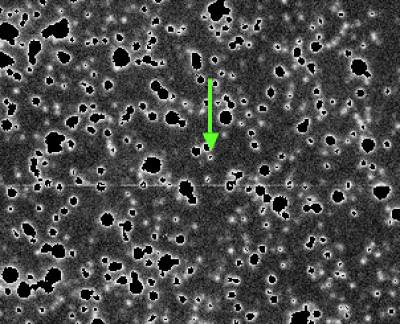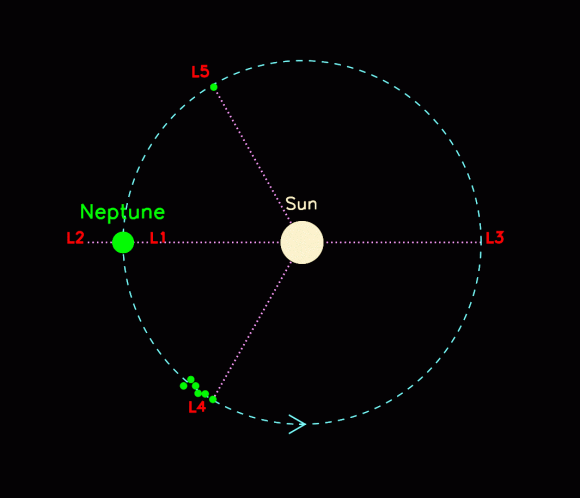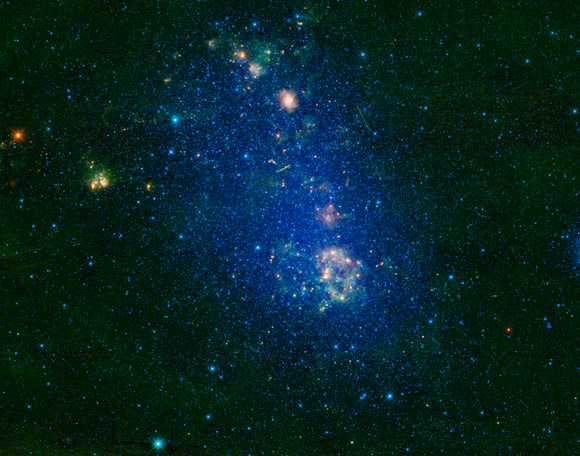[/caption]
If you think that asteroids are boring, unchanging rocks floating in space waiting only to crop up in bad science fiction films, think again. Images and data that are being returned from various asteroid flybys – such as those by the Rosetta spacecraft and Hayabusa sample return mission – show that asteroids are dynamic, changing miniature worlds unto themselves.
During the recent flyby of the asteroid 21-Lutetia in July, the ESA’s Rosetta spacecraft took an amazing amount of data. After combing through all of this data over the past few months, astronomers have calculated that the asteroid is covered in a 2000-foot (600 meter)-thick blanket of rocks and dust called regolith. This dust is not unlike the outer layer of the Earth’s Moon, consisting of pulverized material that has accumulated over billions of years.
Rosetta is on a course to meet up with the comet 67P/Churyumov-Gerasimenko in 2014, but the spacecraft is no stranger to asteroid visits – on September 6th, 2008, Rosetta made its closest approach of the asteroid 2867-Steins. During this brief visit, Rosetta came within 500 miles (800km) of the small, diamond-shaped asteroid. Among the discoveries made were a chain of impact craters that were likely caused by the collision with a meteoroid stream, or the impact with another small body.
It then approached 21-Lutetia on July 10th of 2010, monitoring the asteroid with 17 instruments on board the spacecraft.
Rosetta took a number of images of the flyby, as well as examining the asteroid with electromagnetic detectors that covered the gamut from the UV to radio waves. Here’s a short animation showing the flyby:
Dr. Rita Schulz from the ESA Research and Scientific Support Department in the Netherlands presented this new information about 21-Lutetia’s regolith today at the Division for Planetary Sciences meeting in Pasadena, CA. She said that the regolith on the asteroid has been determined to be about 2000 feet (600 meters) thick, and that it resembles the regolith on the Moon. Images from the flyby reveal landslides, boulders, ridges, and other kinds of different geologic (or asterologic?) features.
21-Lutetia was determined by the July flyby to have a large, bowl-shaped impact crater on its surface, as well as an abundance of smaller craters. The thick covering of dust “softens” the sharper edges of impact craters in many of the images taken. Whether or not most asteroids of this size are covered in a similar blanket of material remains to be seen.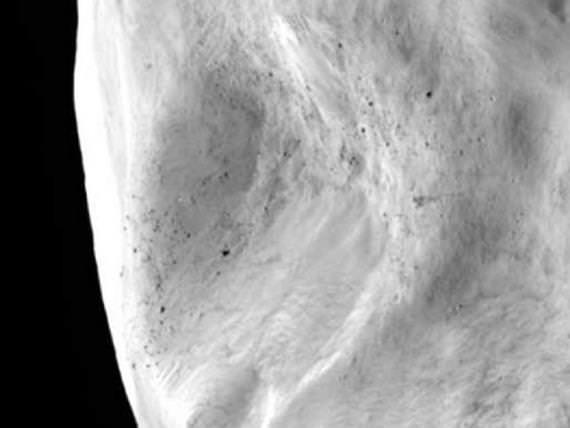
In understanding more about asteroids and comets, astronomers are better able to hone their model of how our Solar System formed. By studying the composition and frequency of impacts of various asteroids, they can improve their data of just how things have changed since the primordial Solar System.
You can bet your boulders that Rosetta isn’t the only spacecraft to be making multiple rendezvous missions with the smaller denizens of our Solar System. Close flybys, impacts and landings on asteroids and comets are becoming almost commonplace for spacecraft.
There’s the Deep Impact mission, which slammed a huge copper weight into the comet Tempel 1, and has since been renamed EPOXI and is set to approach the comet Hartley 2. The upcoming approach of Vesta and Ceres by the Dawn mission is very much anticipated, and of course the recent success of the Hayabusa asteroid explorer has been a terrific tale of just how much we stand to learn from the trail of small celestial cairns that lead into our past.
Source: ESA, DPS Press Release

